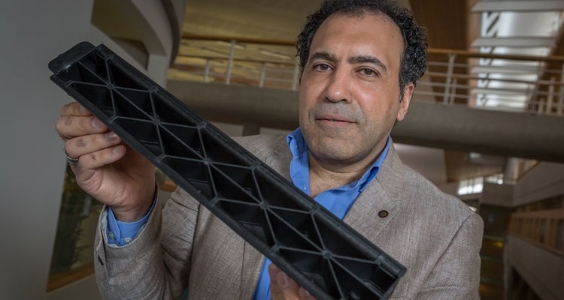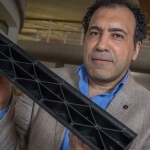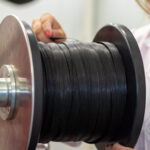Over the past two years, Sunderland, along with a consortium of five research partners from Italy, Spain and Germany, has led a series of tests with support from Centro Ricerche CRF of Fiat Chrysler Automobiles, analyzing the properties of graphene to determine how it behaves when used to enhance the advanced composite materials in vehicle production. For the prototype, the team sought to produce a car bumper to highlight the composites’ properties. Researchers embedded graphene into a polymer and mixed with traditional carbon or glass fiber, which led to changes in its properties, making it lighter, stronger and tougher, allowing the researchers to reduce the thickness of the structural components. “The results we discovered in the first stages are significant; we achieved a lot more than we ever anticipated,” said Elmarakbi. “The material is very light and very strong and the impact testing we did showed a 40 percent higher specific energy absorption than in traditional composite materials. It’s also more stable; it’s a controlled fracture when you hit it, even at a higher velocity, it absorbs the energy in a controlled way. We expected this at the beginning but did not expect the results to be this high.” However, Prof Elmarakbi says there are still challenges to be overcome. First, there are difficulties in the applying graphene. The thicker it’s applied the more brittle it becomes, like graphite. “Getting the right balance between the graphene and the polymer is crucial,” said Elmarakbi. “The composite cannot be too weak, or so strong that it’s unable to absorb energy in the event of a collision. Modern cars are designed to crumple in a crash – protecting the passengers – whereas a composite that is too strong would transfer energy to the car’s passengers, compromising their safety.” Secondly, it’s difficult to uniformly disperse the graphene in the polymer. “We have a very good uniform dispersion now, but it’s not an easy task. We need to make it lightweight and at the same time very safe. Part of the challenge in reaching this point has been that it’s all new, nothing exists and everything we’re doing is a first. We’ve even had to design the software to simulate the Graphene applications from scratch,” said Elmarakbi.













